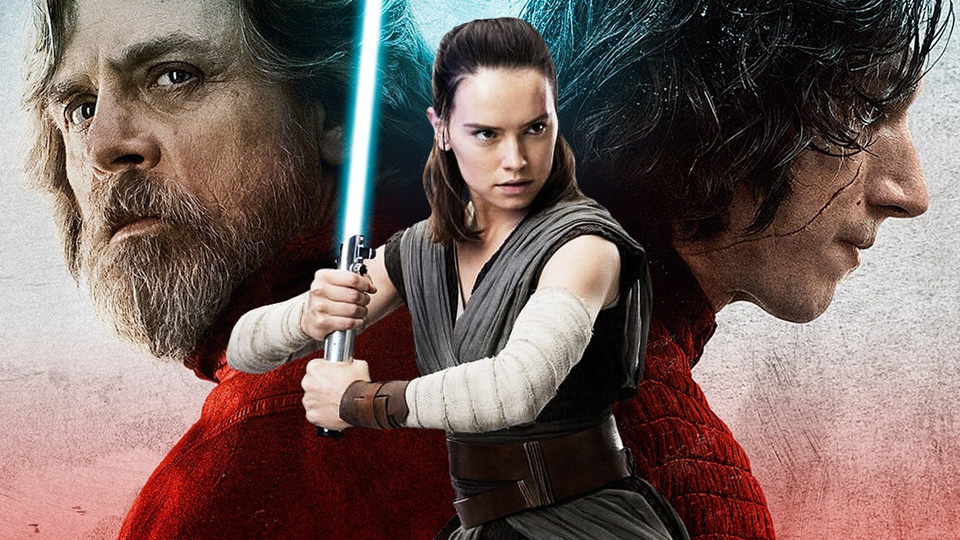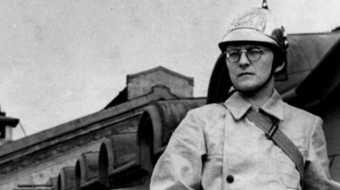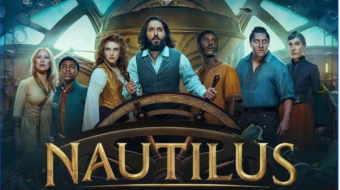
Star Wars: The Last Jedi opened last weekend to split reviews among fans and critics. With a whopping 93 percent rating on Rotten Tomatoes from critics, but a 56 percent audience score, it seems that the long-awaited follow-up did not meet expectations for nearly half of its most loyal fanbase.
The second installment of the most recent movie franchise (and the ninth in the saga) launches right where The Force Awakens left off, leading the audience back to the moment that Rey finally discovers Luke Skywalker’s location and promptly hands him his long-lost blue lightsaber. Some might imagine that this is the beginning of a long montage of Jedi training, but the movie takes a completely different route as Skywalker promptly tosses the lightsaber over his shoulder, thus confirming his line from the trailer, “This is not going to go the way you think.”
Spoiler warning.
The entirety of The Last Jedi focuses on a number of different storylines, some of which advance the plot in clearer and more concise ways than others. Rey’s narrative mostly deals with Luke’s inability to let go of his previous mistakes and allow for a new generation of Jedi to rise. In the past we’ve seen a sort of Kenobi-Skywalker force hegemony in the saga, one that many have attributed for the failure of sustaining the Jedi order. Skywalker spends much of the film unpacking his own trauma, rather than teaching Rey about the ways of the Jedi. Rey makes a decisive choice to leave Skywalker and find her own path, after being continuously turned away by the Jedi Master, despite some attempts at working with her.
This marks a significant shift in the way that future movies have the potential to be framed. Traditionally, Jedi are trained by other Jedi. In the past we have seen the historical trend of corrupted father-son dynamics leading to a rise in the dark side. It is no secret that the Luke/Anakin relationship mirrors that between Kylo and Luke, not to mention the personal qualms that Kylo has with his actual father, Han Solo. Emphasis is placed on the family relationships that each of the trainees has had with their father/mentor figures.
Rey’s narrative is a breath of fresh air, as she is neither a Kenobi, nor a Skywalker, thus exemplifying that the greatest usage of the force is not limited to those who have specific bloodlines. We see hints of this theme throughout the film, with glimpses of a stable boy, who worked at the racing tracks, using the force to grab a broom. Rey’s own use of the force grows stronger throughout the film, as she eventually faces down the Elite Praetorian Guards in an unlikely alliance against Supreme Leader Snoke.
At the heart of it, director Rian Johnson takes a risk. He strays away from the nostalgic safety of the linear plot device that The Force Awakens followed (practically recycling the storyline of A New Hope) to explore some of the personal barriers that individual characters faced. Poe Dameron, for example, struggled with his ability to trust outside of his own impulsive instincts. His toxic masculinity and reckless behavior led to the death of his fellow crewmates and almost successfully executed a mutiny of the resistance ship against Vice Admiral Holdo. Were it not for Leia’s ex machina interference (Carrie Fisher in her last role), he might have doomed the ship when it came under attack from General Hux’s command.
Similarly, Finn struggles between wanting to run away from his problems and his past. He meets Rose Tico (played by Kelly Marie Tran) who has just lost her sister in a resistance attack against the First Order. Together these characters help each other heal and grow.
Several parts of the movie seemed to be placed as fillers, such as the longwinded search for the “code cracker” (played by Benicio Del Toro) at Canto Bight, a planet home to the galaxy’s most elite entities. The buildup and letdown of their failed mission was disappointing to say the least, but also distracted from time that could have been devoted to further developing more interesting character dynamics.
Kylo Ren continues to lack some context; his character could have been and in future might be better refined with the proper attention. For many Star War fans, Darth Vader’s successor stands as a weak comparison to his grandfather’s power. Kylo does, however, hold an intimate “force connection” with Rey, which one can hope will be expanded upon in the following films.
All in all, The Last Jedi is worth a watch—not the strongest in the series, but still a far cry from the horrendous prequels that fans have grown to love/hate. It challenges the notions of elitism that the force is typically associated with, and explores the ways in which the commoner can break beyond the traditional teachings of the force to form a new generation of Jedi. While Johnson may not have met the heightened expectations of Star Wars fanatics, he certainly set the framework for a better transition into the next film.
3.5 stars out of 5.










